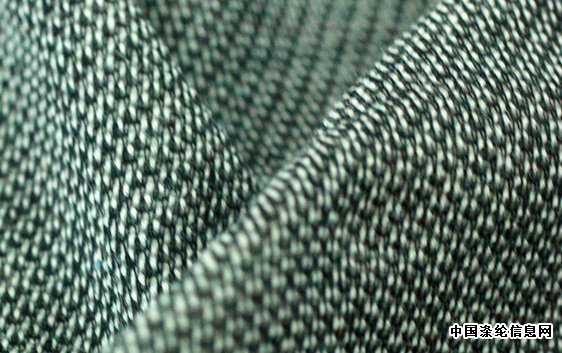Advantages and Disadvantages of Acrylic Fiber and Polyester: See which performance you want to achieve. If it is strong and anti-wear is polyester, if shrinkage and sensitization are good, the strength and anti-wear of polyester are the first. Acrylic The sensitization is the best of all ingredients! If you use price theory, acrylic fiber is expensive! The following is a specific introduction! 
Polyester: Polyester is widely used in the manufacture of clothing fabrics and industrial products. Polyester has excellent shape properties. The flattened, fluffy form or pleats produced by the polyester yarn or fabric after being shaped, can be used for a long time after repeated washing in use.
Performance 1. High strength. The short fiber strength is 2.6 to 5.7 cN/dtex, and the high strength fiber is 5.6 to 8.0 cN/dtex. Due to its low hygroscopicity, its wet strength is essentially the same as the dry strength. The impact strength is 4 times higher than that of nylon and 20 times higher than viscose.
2, good flexibility. The elasticity is close to that of wool, and when it is stretched by 5% to 6%, it can be almost completely recovered. The wrinkle resistance is superior to other fibers, that is, the fabric is not wrinkled, and the dimensional stability is good. The modulus of elasticity is 22 to 141 cN/dtex, which is 2 to 3 times higher than that of nylon.
3. Heat resistance and thermal stability are the best in synthetic fiber fabrics.
4. The surface of the polyester is smooth and the internal molecules are closely arranged.
5, good wear resistance. Wear resistance is second only to nylon with the best abrasion resistance, better than other natural and synthetic fibers.
6, good light resistance. Lightfastness is second only to acrylic.
7, corrosion resistance. It is resistant to bleaches, oxidants, hydrocarbons, ketones, petroleum products and inorganic acids. Resistant to dilute alkali, not afraid of mildew, but hot alkali can decompose it.
8. Dyeing is poor, but the color fastness is good and it is not easy to fade.
Varieties Polyester varieties include short fibers, drawn yarns, textured yarns, decorative filaments, industrial filaments, and various differential fibers.
Polyester staple fiber 1. Distinguish according to physical properties: high strength and low elongation type, medium strength medium extension type, low strength medium extension type, high modulus type, high strength and high modulus type 2. According to post processing requirements: cotton type, hair type , hemp type, silk type 3. According to the use of distinction: clothing, cotton, decorative, industrial 4. Distinguish according to function: cationic dyeable, moisture absorption, flame retardant, colored, anti-pilling, antistatic 5. According to fiber Section distinction: Shaped wire, hollow wire.
Polyester filament 1. Primary yarn: undrawn yarn (conventional spinning) (UDY), semi-pre-oriented yarn (medium speed spinning) (MOY), pre-oriented yarn (high speed spinning) (POY), high orientation yarn (Super High Speed ​​Spinning) (HOY)
2. Stretched wire: drawn wire (low speed drawing wire) (DY), full drawing wire (spinning one step method) (FDY), full wire drawing (spinning one step method) (FOY)
3. Deformed silk: conventional textured yarn (DY), tensile textured yarn (DTY), air textured yarn (ATY).
Acrylic fiber: Acrylic fiber is the trade name of polyacrylonitrile fiber in China, and foreign countries are called "Ao Lun" and "Cosmell". Generally, it refers to a synthetic fiber obtained by wet spinning or dry spinning using a copolymer of 85% or more of acrylonitrile and a second and a third monomer. A fiber obtained by spinning a copolymer having an acrylonitrile content of between 35% and 85% is referred to as a modacrylic fiber.
The main production process of acrylic fiber: polymerization → spinning → preheating → steam drawing → water washing → drying → heat setting → curling → cutting → packing.
Polyacrylonitrile fiber is very similar to wool and has good elasticity. The rebound rate can still be maintained at 65% when stretched by 20%. It is fluffy and soft, and its warmth is 15% higher than wool. It is called synthetic wool. The strength is 22.1 to 48.5 cN/dtex, which is 1 to 2.5 times higher than wool. Excellent light fastness, one year in the open air, the strength is only reduced by 20%, can be made into curtains, curtains, tarpaulins, guns and so on. It is resistant to acids, oxidants and general organic solvents, but has poor alkali resistance. The fiber softening temperature is 190 to 230 °C.
Acrylic fiber is known as artificial wool. It has the advantages of softness, bulkiness, easy dyeing, bright color, light resistance, antibacterial, and no fear of insects. It can be purely or blended with natural fibers according to the requirements of different uses. Its textiles are widely used in clothing, decoration, industry, etc. field.
Polyacrylonitrile fiber can be blended with wool into wool, or woven into blankets, carpets, etc. It can also be blended with cotton, rayon, other synthetic fibers, and woven into various clothing and indoor products. The expanded tops processed by polyacrylonitrile fiber can be purely spun, or blended with viscose fiber and wool to obtain the main production process of medium and thick wool and fine wool "kesmi" polypropylene fiber.
Please indicate the source.
100% Cotton Chambray Fabric,Polar Fleece Fabric,Polyester Jacquard Fabric,Poly Voile Fabric
Shaoxing City Laiteng Imp.&Exp Co.,Ltd , https://www.laiteng-tex.com